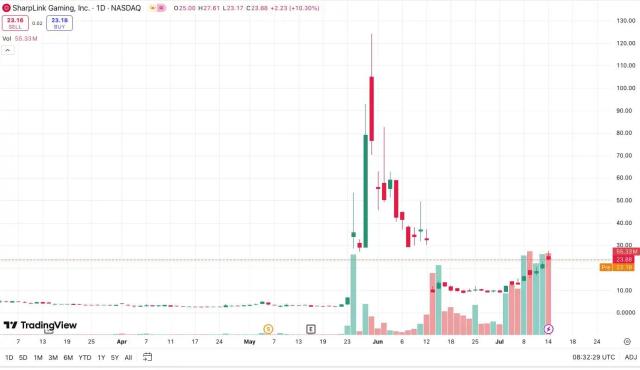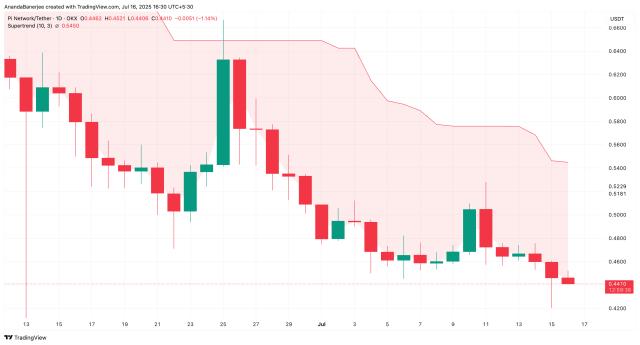When ETH breaks through 3200, and the ETH/BTC exchange rate breaks 0.026, no one expected that ETH could change hands.
ETH at the beginning of the year was like a derailed high-speed train, surging and then plummeting. From the end of 2024 to April 2025, ETH's price dropped from $4000 to $1500, halving repeatedly, underperforming BTC, SOL, and even lagging behind a bunch of meme coins.
Just when retail investors were wailing, KOLs were going short, and institutions were silent, a quieter and more covert script was unfolding backstage: a classic wash-out.
The sharp decline was not just a "pricing adjustment" for ETH, but more like a deliberately designed and purposeful exit cleansing.
The price drop from 4000 to 1500 was not to prove ETH's lack of value, but to systematically wash out retail investors who had heavily positioned at high points during the bull market.
As those who once waved the E-guard flag began to cut losses and flee. And the ones taking over were no longer another batch of retail investors, but more silent and disciplined funds: it was like a group of Wall Street professionals had arrived.
They didn't shill ETH on social platforms, nor did they build positions ostentatiously, but quietly bought in through small-cap US stock fundraising, market-making accounts, and structured arbitrage funds.
When everyone was asking "Has the bottom been reached?", the real position-building was already complete.
Looking back, this sharp decline from 4000 to 1500 was not a signal of recession, but more like a handover ceremony of discourse. Ethereum no longer belongs to KOLs or speculators.
But this time, is Wall Street really the one taking over?
Changing Hands: How Institutions Quietly Set the Stage for ETH
The story of changing hands had been buzzing since the first half of the year. After the Hong Kong conference, rumors of "Ethereum's underground garage handover" spread even more.
At the time, most people's evaluation was: Retail investors love to fantasize.
However, on-chain data had long shown signs - from December 2024 to April 2025, while Ethereum's price was in free fall, the Herfindahl-Hirschman Index (HHI) was quietly turning upward.
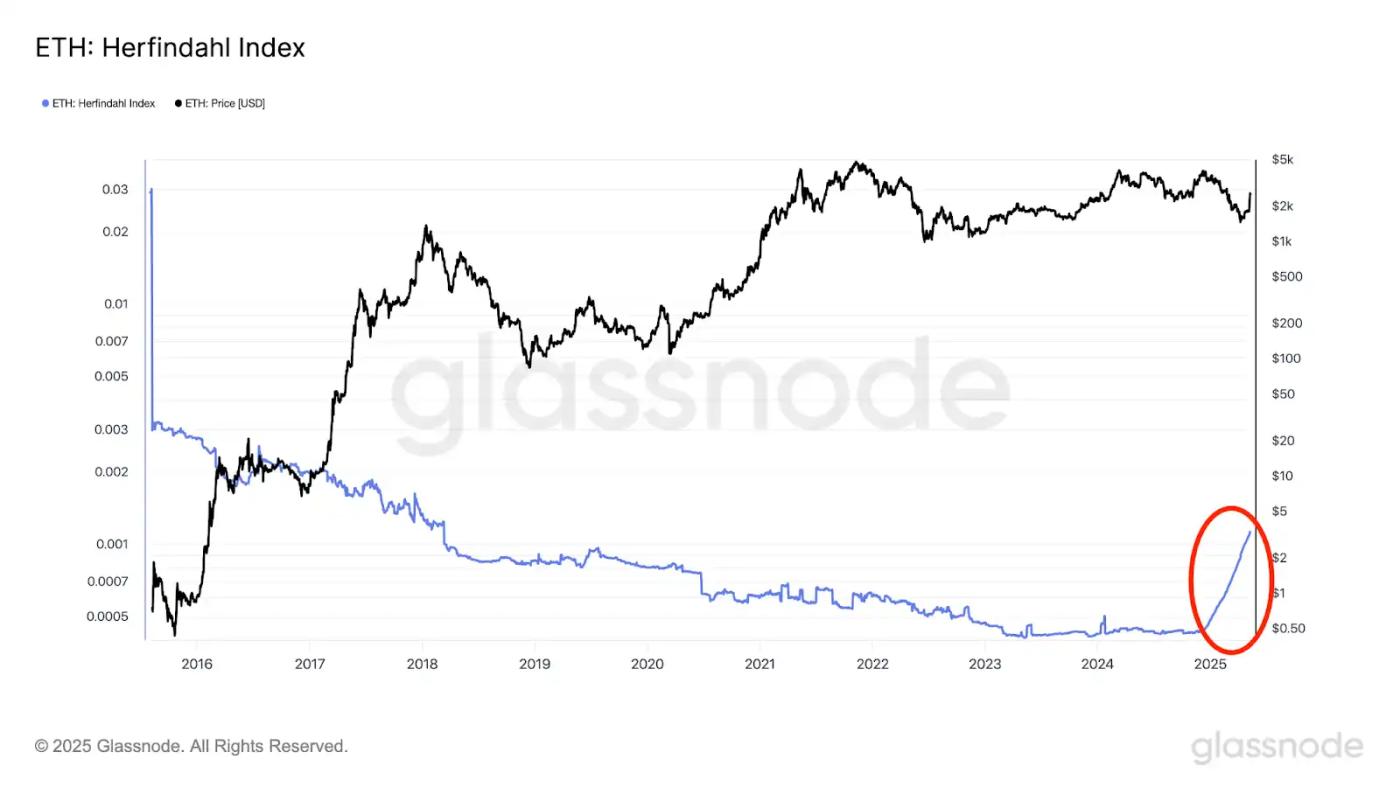
Image source: Glassnode
HHI is an indicator of asset concentration. On the Ethereum chain, it represents the trend of chip ownership. While prices were plummeting, HHI was rapidly rising, indicating that ETH was not being widely sold off. Instead, it was concentrating from dispersed retail investors to a few large holders or institutional addresses.
[The translation continues in the same manner for the rest of the text, maintaining the professional and technical tone while accurately translating the content.]At the same time, they launched the DAT fund, specifically investing in companies with digital assets as strategic reserves (Digital Asset Treasury Companies, DATs), and referred to this model as a new narrative of crypto exposure through public markets.
"Digital Asset Treasury (DAT) Companies will emulate MSTR, providing exposure to digital assets through a publicly listed permanent capital vehicle. After researching the strategy, we have built confidence in this investment thesis and concentrated our bet."
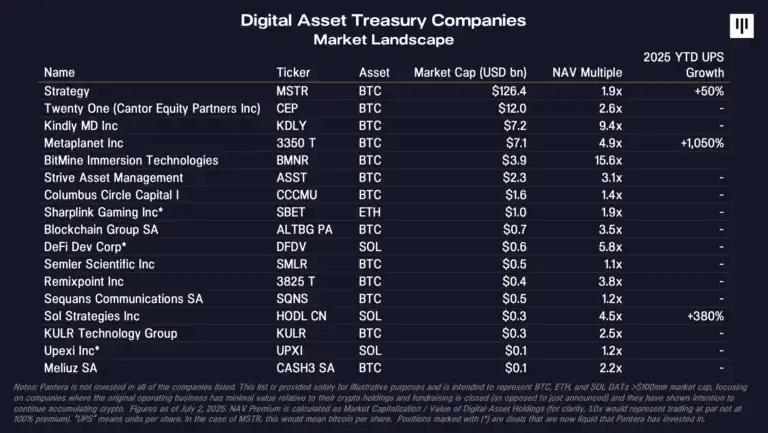
DAT Companies Invested by Pantera
Currently, the top two strategic reserve companies in ETH holdings, SharpLink and Bitmine, both have Pantera's involvement.
In May 2025, Pantera participated in SharpLink's $425 million private equity financing, co-investing with crypto VCs like ConsenSys, ParaFi Capital, and Galaxy Digital.
On June 30, 2025, Pantera also participated in BitMine's $250 million private equity financing, with Galaxy Digital and ParaFi Capital co-investing.
Galaxy Digital manages the ETH ETF, while ParaFi Capital, like Pantera, has invested in numerous Ethereum DeFi applications including Uniswap and Aave.
Additionally, ParaFi has invested in Consensys, which is the main driving force behind SharpLink and a long-time partner of Pantera for over a decade.
Consensys
Consensys developed critical infrastructure applications for Ethereum such as Metamask, Infura, and Linea. Its founder, Joseph Lubin, is an Ethereum co-founder with influence comparable to Vitalik.
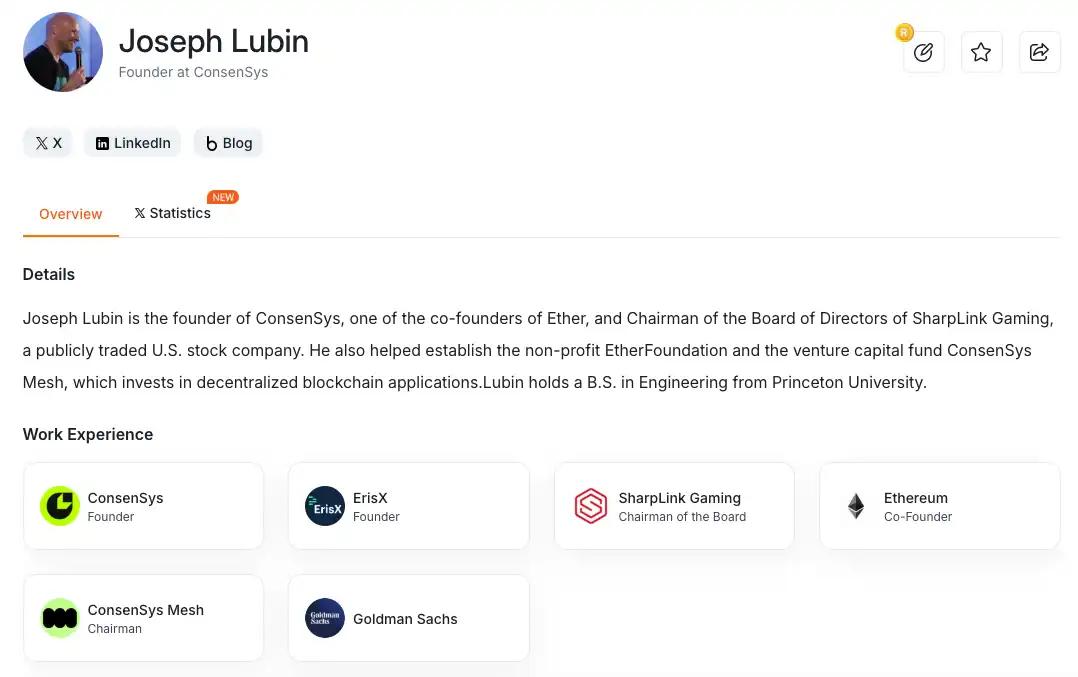
Joseph Lubin not only holds a large amount of Ethereum but also became the board chairman of SharpLink after investing, owning 9.9% of SBET shares, becoming its largest public individual shareholder.
Before joining Ethereum, Lubin also worked at Goldman Sachs, representing a cross-border figure between traditional finance and the crypto world.
Besides Consensys and Pantera, these Ethereum whales from the ICO era, another crypto giant, Founders Fund, has also turned its attention to the Ethereum strategic reserve track.
Founders Fund
Founded by Silicon Valley and crypto legend Peter Thiel, Founders Fund invested $200 million in cryptocurrency in 2023, using $100 million to purchase 58,824 ETH at an average price of $1,700.
Founders Fund is also an investor in multiple Ethereum-based star projects like Polymarket and Ondo Finance.
Founders Fund also participated in BitMine's $250 million private equity financing, holding 9.1% of its shares (5,094,000 shares).
BitMine currently holds over 163,000 ETH, valued at approximately $500 million, with Founders Fund's investment equivalent to indirectly holding about 14,853 ETH through Bitmine.
Upon completing the Ethereum strategic reserve private placement financing, Bitmine announced the appointment of Tom Lee as its new board chairman.
(The translation continues in the same manner for the rest of the text)From the chain perspective, ETH's supply and demand structure remains solid. EIP-1559 continues to be implemented, with ETH supply trending towards moderate deflation; the staking rate is steadily rising, with over a quarter of circulating supply locked in the mainnet or LRT structure, providing a foundation for network security while giving ETH characteristics similar to "on-chain government bonds".
The expansion route is clear, EIP-4844 is online, Rollup costs are continuously decreasing, and although the L2 developer ecosystem's enthusiasm is not high, infrastructure is still continuously improving.

Image source: the block
However, off-chain, ETH's narrative is changing. In the past few years, Ethereum's protagonists were KOLs, VCs, and DeFi protocols, built on growth curves driven by imagination and market dreams. But since the 2024 LSD narrative faded, NFT sector became dormant, and L2 expansion stagnated, the market has grown weary of ETH's "future story".
VCs can't craft new PPTs, retail investors are drawn away by meme, and Ethereum suddenly lost its reason for price appreciation.
Just as retail investors feel fatigued by the Ponzi scheme of meme and have their confidence doused by altcoin selloffs, Ethereum OGs have equipped ETH with a narrative aligned with traditional financial logic.
ETH's rise is now explained by: can it be packaged as a structured note, can it produce a 6% annual stable on-chain yield, can it become the "government bond-like asset" in a TradFi investment portfolio.
BTCS's approach is particularly typical: this veteran Web3 US stock company announced in June 2025 that it will issue up to $100 million through an S-3 registration, with funds to be used for increasing ETH holdings, expanding node operations, and on-chain yield management.
BTCS proposed a "DeFi + TradFi hybrid structure" flywheel model:
Using a certain leverage rate, conducting ATM and convertible bond financing through a listed company to purchase ETH, then using ETH as collateral, combining on-chain lending, node staking yields, MEV extraction, and potentially future interactions with the Builder ecosystem to construct a stable cash flow model.
In their hands, ETH is not a speculative asset, but a financial instrument that can be repeatedly discounted, a part of institutional financial models.
This narrative shift essentially aligns with the logic of traditional financial institutions.
In this sense, ETH hasn't changed; what's changed are its audience and storytelling method. The old consensus is withering, but a new financial pricing narrative is slowly emerging.
From Consensus to Conspiracy, ETH's Script Seems Familiar
In the past, when discussing ETH, we looked at technological iterations, narrative rotations, and consensus strength.
But today, what truly determines ETH's next fate is not the "storytellers", but the "structure writers".
After all, crypto can't be just about meme, Ponzi schemes, and gaming; blockchain application value and decentralized finance narratives must continue to be told to be truly discovered by mainstream financial value.
SBET, BMNR, BTCS, BTBT... Behind these quietly entering US stock companies are Ethereum's most OG investors and whales, also the players most familiar with "traditional financial games".
They know that once a digital asset can be standardized, structured, and incorporated into traditional investment portfolios, its price will be redefined.
When Joseph Lubin, Tom Lee start accepting interviews from mainstream financial media like CNBC, deeply linking Ethereum's potential with stablecoin narratives; when Pantera and Peter Theil begin publicly disclosing their Ethereum strategic reserve holdings:
Crypto giants and Ethereum whales are selling Ethereum's "new story" to Wall Street and more traditional financial institutions.
Looking back, Ethereum's "changing guard" process is quite typical: emotional panic, retail investor exodus, then main players using PIPE financing, "on-chain staking yield models", and "US stock secondary market speculation" to take over and build positions.
This is not a Web3 native story, but a familiar TradFi script reproducing: channelizing assets, structuring narratives, commodifying volatility.
And ETH is transforming from a consensus asset to a conspiracy asset. Consensus is retail self-identification in communities; conspiracy is the silent handover behind institutional structural trades.
All of this is a sign that main players have completed "position switching" and are beginning to "control the plate".
We'll ultimately discover that ETH's underlying hasn't changed, the chain is still running, code is still updating, and behind the largest holdings are still the same group of people. But who is talking about it, who is matching it, the narrative driving ETH's rise, and the target audience, have already changed.
The mask worn is Wall Street's face, but the hands operating are still those familiar old sickles.



